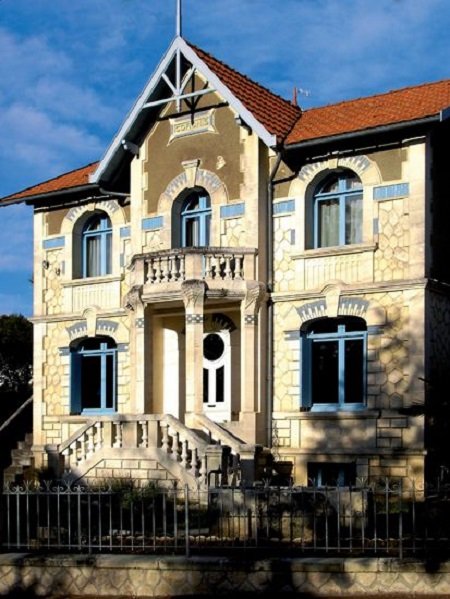#14220. Elegant Art Nouveau: Symmetrical Villa Facade with Jugendstil Decorative Elements

Before us stands an impressive example of a villa in a style leaning towards Jugendstil (the German variant of Art Nouveau) with elements of Neoclassicism. The building is a two-story mansion with a symmetrical facade clad in light-colored stone. The facade is richly decorated with architectural details: window frames feature keystones, and the first floor is adorned with rustication, which gives a sense of solidity and reliability.
The central part of the facade is accentuated by a projecting risalit with an open balcony on the second floor, decorated with a balustrade of stone balusters. The main entrance is framed by simple yet elegant columns and is accessible via a wide staircase with ornate railings. Particular attention is drawn to the decorative pediment on the roof with a triangular finish characteristic of the Art Nouveau style and wooden decorative elements.
The window openings have arched tops on the first floor and rectangular shapes on the second, creating an interesting rhythmic pattern. The color scheme of the facade is built on the contrast between light stone and terracotta roof tiles, which is typical of the European architectural tradition of the early 20th century.
When designing the facade of your own home, several valuable techniques can be drawn from this example: a symmetrical composition creates an impression of solidity, the use of rustication on the lower floor visually strengthens the foundation of the building, while decorative elements such as balustrades and pediments add individuality and character even to a relatively small structure.